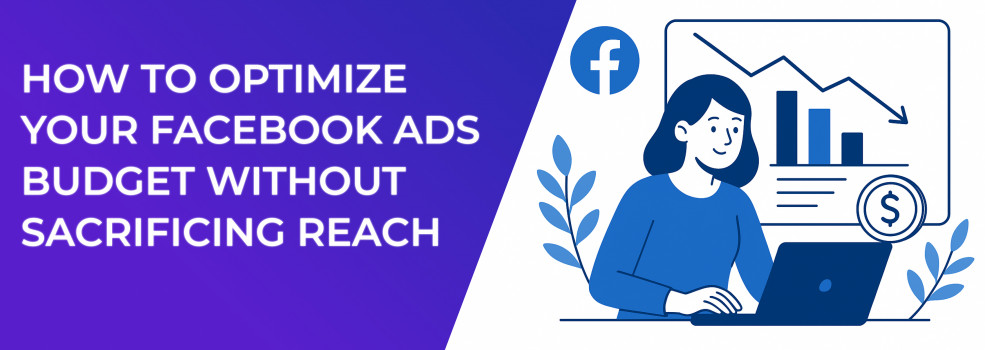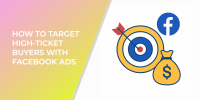Running Facebook campaigns can feel like balancing on a tightrope. Lean too hard into “saving money” and your reach plummets; chase broad reach and you burn through cash. The good news is that you can have both: smart budget efficiency and sustained visibility, if you make data-backed tweaks to the way you plan, buy, and measure ads.
Below you will find a practical, battle-tested framework that squeezes more value from every dollar while keeping impressions healthy. After reading each section, pause for a moment to picture how you would apply the advice to a live campaign; those quick mental rehearsals help the lessons stick.
1. Start With a Granular Performance Audit
Your first job is visibility, not trimming spend. Open Ads Manager and pull the last 30 – 90 days of metrics at the ad-set level. Work methodically through the data:
-
Facebook ad impressions versus reach show whether you are finding fresh eyeballs or bombarding the same few thousand people.
-
Average click-through rate on Facebook ads (CTR) reveals how enticing your creative is; anything below your industry’s median deserves attention.
-
Average cost per click (CPC) and cost per 1,000 impressions (CPM) highlight pricey placements that may be dragging down efficiency.
-
Conversions, Facebook ads conversion rate, and most importantly ROAS expose the real value of every dollar spent. Compare your numbers to published ROAS benchmarks to see if you are lagging.
If Ads Manager ever flashes the dreaded “Ad Set May Get Zero” alert, follow the troubleshooting steps in Why You See “Ad Set May Get Zero” on Facebook and How to Fix It.
Understanding your Facebook ad metrics like CTR, CPC, and ROAS is the first step toward smarter budget optimization.
Write down the two or three metrics with the widest gaps; they will become your priorities in the next steps. A clear shortlist keeps you from chasing every shiny object that pops up in the dashboard.
2. Align on a Single North-Star KPI
Optimization without a destination is just tinkering. Decide whether success rides on the lowest-cost purchases, the highest-quality leads, or the maximum reach within a fixed spend. State the goal in a sentence, share it with everyone who touches your ads, and pin it to the campaign brief. When the team judges results on the same scorecard, analysis becomes faster and fights over “what matters” disappear.
3. Turn On Campaign Budget Optimization or Advantage Campaign Budget
Meta’s algorithms can locate inexpensive impressions faster than any human buyer. Switching from manual budgets to Campaign Budget Optimization (CBO) or the newer, AI-powered Advantage Campaign Budget lets the platform allocate spend in real time toward ad sets delivering the strongest CTR and conversion efficiency. For a detailed walkthrough of Meta’s newer budget tool, see How to Optimize Advantage Campaign Budget for Scalable Facebook Ads.
Keep ad-set minimums low for the first three to five days so the system can test freely. When the algorithm identifies clear winners, raise floors on those ad sets to lock in scale. Stuck in a learning loop? Speed things up with the tactics in How to Finish the Facebook Learning Phase Quickly. Give the platform at least a week of stable data; frequent tweaks force a new learning phase and inflate costs.
4. Dial In Bid Strategy, Then Leave It Alone
Choose the bid style that matches your KPI, lock it in, and step back long enough to collect clean data.
Need more nuance on bid types and thresholds? Check out The Ultimate Guide to Facebook Ad Bidding Strategies for 2025.
Review this table, circle the bidding mode that fits your campaign, and resist second-guessing it until you have seven days of results. Healthy patience costs less than daily bid tinkering.
5. Shrink Audience Overlap and Creative Fatigue
A bloated audience structure quietly inflates CPMs, so prune it first. Exclude saved audiences that heavily intersect to keep frequency under control. If you’re unsure where overlap becomes wasteful, dig into the benchmarks in The Role of Audience Overlap in Facebook Ads Performance.
Then rotate at least three creatives per ad set; fresh visuals alone can lift CTR by more than 20 percent in a single week. You can also spot the warning signs early with the checklist in Ad Fatigue on Facebook: How to Spot It Early and Fix It Fast.
If you want an even lighter lift, enable Dynamic Creative so Meta automatically pairs copy and images that win clicks. Check reports every few days and pause variants whose performance stalls. A little pruning keeps the algorithm focused on combinations that drive results instead of spreading budget thin across deadweight ads.
6. Automate Waste-Cutting Rules
Manual monitoring works until you need to sleep. Automated rules guard the budget 24/7:
-
Pause any ad set after 30 dollars spend with CTR below 0.5 percent.
-
Reduce budget by 25 percent if cost per result exceeds 1.3 × the account average.
-
Increase budget by 15 percent on ad sets that beat your ROAS target for three consecutive days.
To build more sophisticated rule stacks, follow the blueprints in How to Use Automated Rules to Improve Facebook Campaign Efficiency.
Double-check each rule before launch; even a tiny typo can turn a safety net into a wrecking ball. Once the rules run smoothly, you will have breathing room for higher-level strategy.
7. Run Controlled Tests, One Variable at a Time
Curiosity fuels optimization, but chaos kills clarity. When you introduce a new headline, launch an A/B test with identical audiences, budget, and schedule. Every experiment should prove or disprove a single hypothesis such as “Benefit-first copy will improve performance by ten percent.” For a complete checklist of what (and when) to test, read Key Strategies for Facebook Ad Testing: What You Need to Know.
Run one-variable tests to identify what really drives performance, then scale with confidence.
Document winners and losers in a shared playbook. Turning isolated experiments into institutional knowledge compounds your gains quarter after quarter.
8. Monitor, Report, Iterate
Build a weekly dashboard that tracks spend, CPM, CTR, conversions, and ROAS. Consistent cadence lets you spot anomalies like ads not delivering before they snowball. If numbers swing wildly, ask whether the change is seasonal, creative, or platform related; the answer dictates whether to pivot quickly or stay the course.
Finish each reporting session by listing one action item for the coming week. Small, focused improvements stack faster than sporadic overhauls.
Key Takeaways
-
Measure first, cut later. Let hard numbers, not hunches, drive budget decisions.
-
Leverage Meta’s AI. Automated budgets distribute spend more efficiently than manual micromanagement.
-
Automate safeguards. Rules stop under-performers from draining funds.
-
Iterate relentlessly. Steady tests of copy, creative, and targeting are the fastest path to better ROAS without hurting reach.
Optimization is not a one-time tune-up; it is an ongoing habit. Follow the cycle above and every dollar you invest in Facebook ads will work harder, smarter, and reach farther than ever before.

